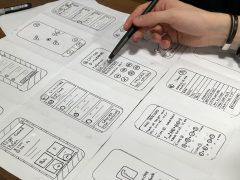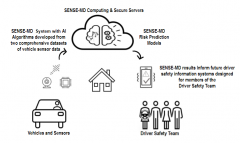Image Copyright © CU-VSIM
4.1: Consult with human factors experts, application developers, NRC life expert panel, and representatives of the Driver Safety Team (DST). They will help decide how to share driver risk information.
The communication of driver risk is complex. As a result, it is important to design it so that the correct people receive relevant and appropriate information efficiently. This task will focus on understanding what should be communicated along with how and to whom it should be communicated.
4.2: Initial design of the DST communication model
This task will focus on designing a prototype communication model, which will lead to an initial design. Eventually, reviews and consultations with human factors experts, application developers, NRC life expert panel and representatives of the Driver Safety Team (DST) validate this design.
4.3: Create a report that provides recommendations on how to summarize the information. This report will also include strategies for communicating driver risk information to the DST.
This report will provide an overview of the prototype communication model. Additionally, it will contain important considerations for sharing driver risk information, first to the mature driver but also to the extended DST. The report will also adopt an inclusive perspective, which will help guarantee that all mature Canadian drivers can benefit equitably from the SENSE-MD technological solution to isolation and accident risk.
